
Sustainable forest Umami “Dried shiitake mushrooms”
The shiitake mushroom is native to Japan and China and is one of the most popular and famous of the many mushrooms. In particular, dried shiitake mushrooms contain high levels of the umami compounds glutamic acid and guanylic acid, which are the essential ingredients in vegetarian cuisine and have supported Japanese culture since ancient times.
Japan is not a major agricultural country but a country of rural culture.
Many of Japan’s annual events and festivals originated in agricultural rituals to pray for and give thanks for a good rice harvest. In addition, art and agriculture have been handed down in some regions as Shinto rituals.
The Japanese log shiitake mushrooms introduced in this article are treasures nurtured in ‘satoyama’, known for their sustainable use of resources and the transmission of unique regional cultures.
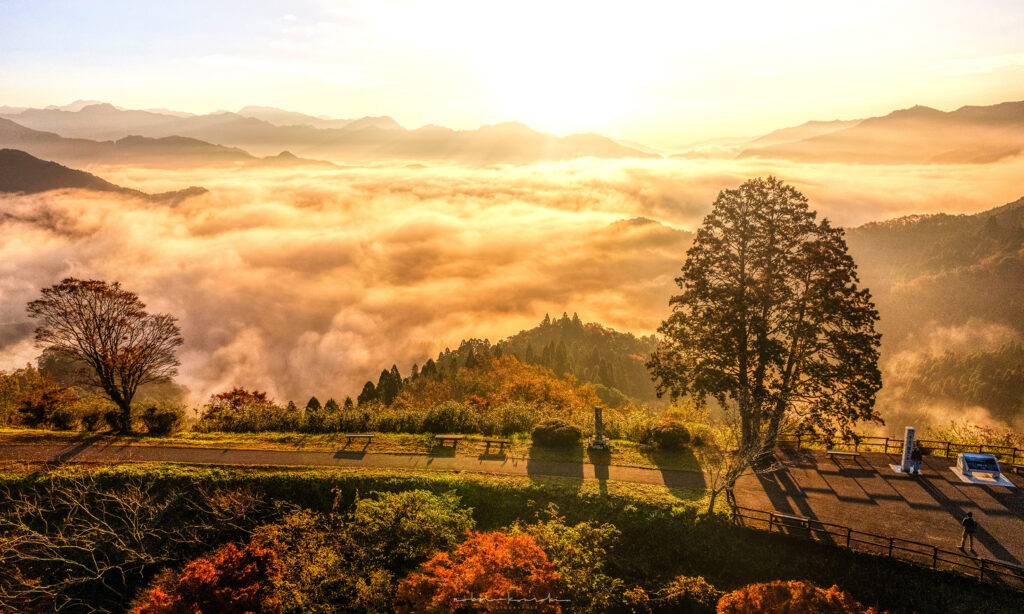
Pesticide-free, log-grown shiitake mushrooms nurtured in a mythical village
Sugimoto Shoten is a shiitake mushroom wholesaler in Takachiho Township, Miyazaki Prefecture, close to Mount Aso, one of the world’s largest calderas.
Aso, an active volcano revered as a god since ancient times, and many rituals and festivals closely related to agriculture can be seen in the neighbouring areas.
Takachiho Township in Miyazaki Prefecture is also famous as a mythical place where the gods descended from the heavens. It is also a popular tourist spot, including Takachiho Gorge, a gorge formed by the erosion of lava from Aso.
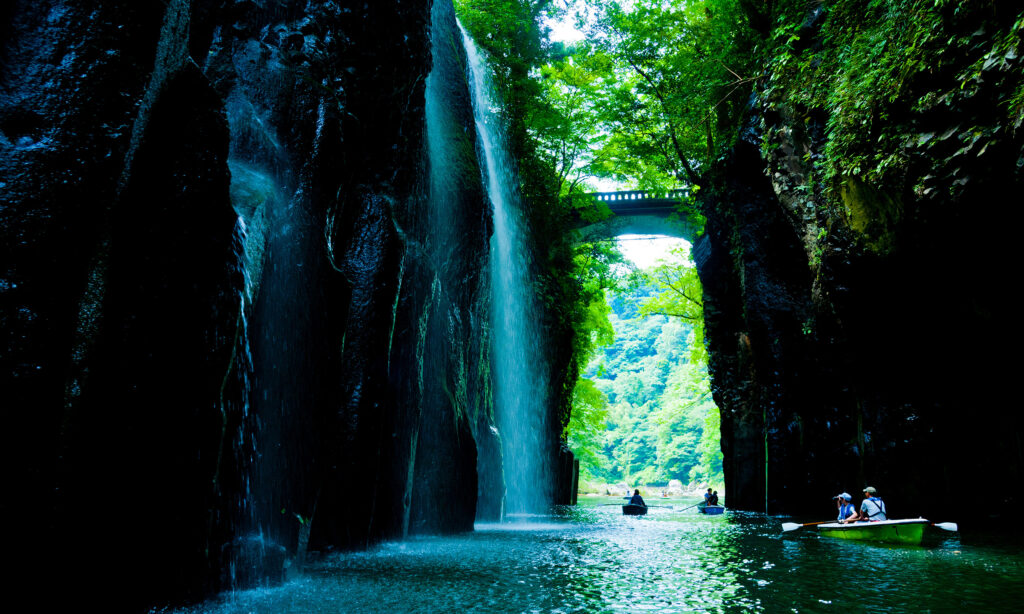
Takachiho has few plains, and about 90% of its area is forested. From autumn to spring, it is enveloped in a mist known as the ‘sea of clouds’—the cool, clear forest air, wind, humidity and rain nurture delicious shiitake mushrooms.
A sustainable cultivation method unique to Japan that connects forests and people
Unlike porcini and other mushrooms, which are difficult to cultivate artificially, shiitake mushrooms can be grown artificially.
There are two main types of artificial cultivation: mycorrhizal bed cultivation and log cultivation.
Mycorrhizal bed cultivation uses sawdust or other wood chips mixed with rice bran and other nutrients and grows in a block-like artificial medium. In contrast, log cultivation uses natural logs as the medium and grows the mushrooms by inoculating them with fungi.
In addition, there are two types of cultivation: greenhouse cultivation, in which the humidity and temperature are controlled, and open-air cultivation, in which the shiitake mushrooms are grown outdoors under near-natural conditions.
Sugimoto Shoten’s shiitake mushrooms are grown in open fields without pesticides.
Since ancient times, Shiitake mushrooms have been growing wild in Kyushu, where Takachiho-go is located. Still, the current cultivation method is uniquely Japanese, handed down by the wisdom and ingenuity of our ancestors.
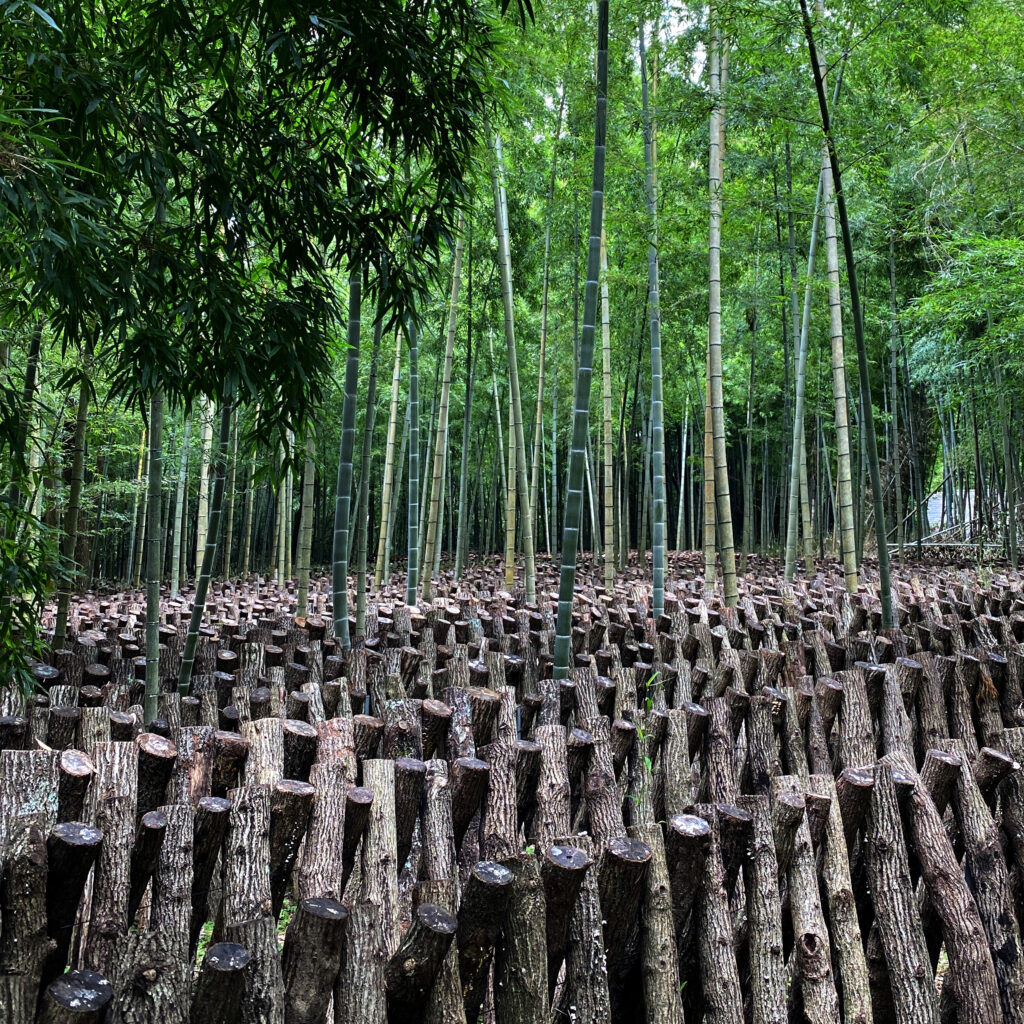
A patient dialogue with nature nurtures the highest quality shiitake mushrooms.
Kunugi (sawtooth oak) is used for the shiitake medium.
In Japan, shiitake farmers cultivate shiitake mushrooms from sawtooth oak, oak trees and other broad-leaved trees, but Sugimoto Shoten’s shiitake mushrooms are cultivated from sawtooth oak. This is because shiitake mushrooms grown on sawtooth oak trees with sweet sap are renowned for their quality and flavour and are in high demand in Japan.
Cultivation of shiitake mushrooms begins by cutting a 15-25-year-old sawtooth oak tree to about one metre in length and hammering in pieces of wood cultured with shiitake mushroom fungi. It takes two years for the fungus to spread and be harvested.
All processes from cultivation to harvesting – for example, the timing of felling the trees, the direction in which the trees are felled when felling, and the timing of cutting the logs to a certain length – require a high degree of skill, as the climate, condition of the trees and other factors are all judged by experience. Speed and efficiency alone are not enough to cultivate the best shiitake mushrooms, which is why they are nature’s bounty.
After two summers, the logs, prepared through dialogue with nature, produce shiitake mushrooms yearly in spring and autumn. The records will finish their role in about five years, after which they will return to the soil and nurture the mountain.
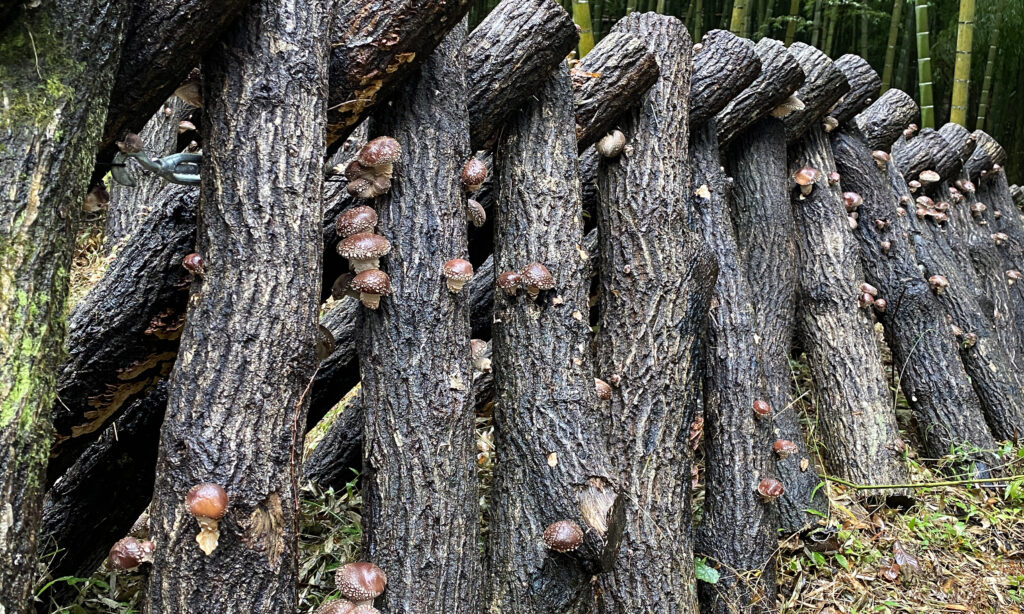
Forest and mountain regeneration facilitated by shiitake mushroom cultivation
The felling of mountain trees for shiitake mushroom cultivation also creates a new cycle. New sawtooth oak sprouts grow from the stumps that have been cut down, and sunlight shines into the cut areas, allowing other plants and wild vegetables to grow.
Rejuvenating the forest in this way increases its ability to absorb carbon dioxide, reviving the mountain and regenerating new life without the need to plant new trees.
A system to protect the bounty of local forests turns the challenges of satoyama into strengths.
Oita, Miyazaki and Kumamoto prefectures in Kyushu, where Takachiho-go is located, boast the top share of dried shiitake mushroom production in Japan. This is due not only to the climatic conditions suitable for shiitake cultivation but also to the government and local authorities technical guidance and production expansion measures.
In addition, Sugimoto Shoten has been independently implementing initiatives to revitalise the region.
Japan today faces the problem of an ageing population with a declining birth rate. The situation is even more difficult in mountainous areas where young people tend to leave than in urban areas, and Takachiho Township is no exception.
While shiitake mushroom production in mountainous areas where there is little flat land requires a lot of physical strength, the producers are ageing and suffering from a lack of successors, and the passing on of the technique itself has been disappearing.
Sugimoto Shoten, with a strong sense of crisis over this situation, is making efforts to protect shiitake production in the region as a whole by decentralising work, for example, by having Sugimoto Shoten undertake the work processes that require strength and stamina and by requesting local welfare facilities for people with disabilities to carry out the more detailed work.
The production process of dried shiitake mushrooms, which are representative of Japan’s shiitake production, is not short. Still, it has been improved and fosters residents’ bonds and pride.
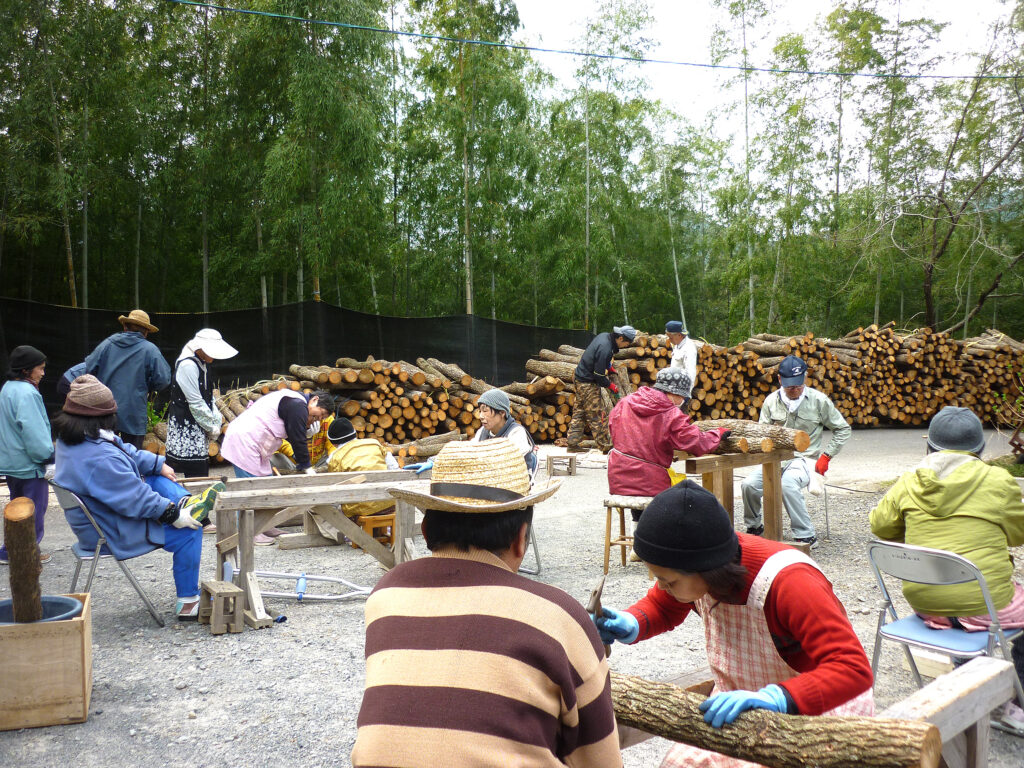
Aalivation effect activates the brain Anchovies Appetite suppression effect Buddhist cuisine Cheese colorectal cancer dietary fibre Dried kombu Dried mushrooms Dried shiitake Dry masurooms Dulse EPA improves immunity interview Iodine Keisuke Matsushima kelp minerals Nice Nori Oliveoil producer Recipes salt reduction SDGs Seavegetables Sea vegetables Seaweed Shiitake Tastes vegitarian Vitamins Wakame well-being Yoga zen
